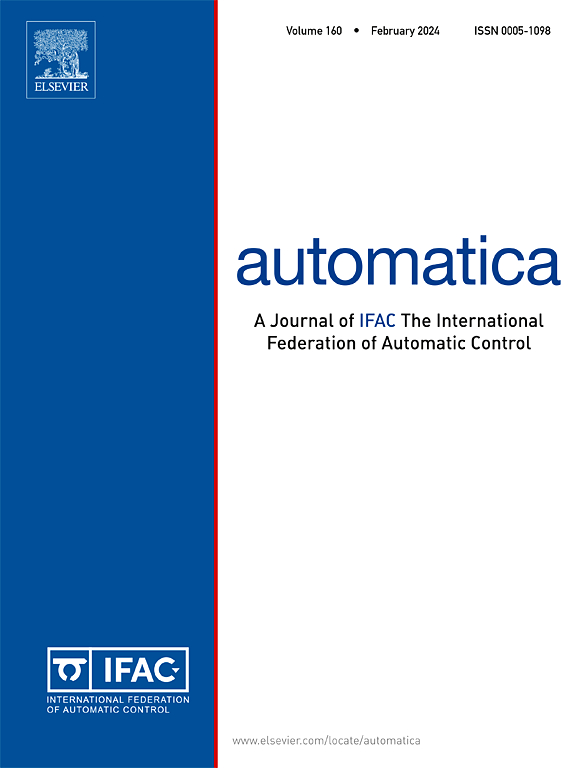连续机器人的自适应无模型干扰抑制
IF 4.8
2区 计算机科学
Q1 AUTOMATION & CONTROL SYSTEMS
引用次数: 0
摘要
本文提出了两种无模型控制策略,用于抑制连续机器人中的未知干扰。这些策略利用基于神经网络的近似技术,通过位置测量来估计不确定的雅各布矩阵。第一种策略针对周期性干扰设计,采用自适应无模型控制器和自适应干扰观测器。第二种策略是针对任意干扰的鲁棒性而设计的,采用单调增长的时变输入和更新法则增益,从而实现渐进、指数和规定时间的参考轨迹跟踪。规定时间内的固定时间稳定概念尤其值得注意,因为它允许预先确定终点时间,而与初始条件和系统参数无关。对每种策略都进行了正式的稳定性分析,并用一个受未知干扰的同心管机器人对这两种策略进行了实验测试。本文章由计算机程序翻译,如有差异,请以英文原文为准。
Adaptive model-free disturbance rejection for continuum robots
This paper presents two model-free control strategies for the rejection of unknown disturbances in continuum robots. The strategies utilize a neural network-based approximation technique to estimate the uncertain Jacobian matrix using position measurements. The first strategy is designed for periodic disturbances and employs an adaptive model-free controller in conjunction with an adaptive disturbance observer. The second strategy is designed for robustness against arbitrary disturbances and employs time-varying input and update law gains that grow monotonically, resulting in the achievement of asymptotic, exponential, and prescribed-time reference trajectory tracking. The notion of fixed-time stabilization in prescribed time is particularly noteworthy, as it allows for the predefinition of a terminal time, independent of initial conditions and system parameters. A formal stability analysis is presented for each strategy, and the strategies are both tested experimentally with a concentric tube robot subject to unknown disturbances.
求助全文
通过发布文献求助,成功后即可免费获取论文全文。
去求助
来源期刊

Automatica
工程技术-工程:电子与电气
CiteScore
10.70
自引率
7.80%
发文量
617
审稿时长
5 months
期刊介绍:
Automatica is a leading archival publication in the field of systems and control. The field encompasses today a broad set of areas and topics, and is thriving not only within itself but also in terms of its impact on other fields, such as communications, computers, biology, energy and economics. Since its inception in 1963, Automatica has kept abreast with the evolution of the field over the years, and has emerged as a leading publication driving the trends in the field.
After being founded in 1963, Automatica became a journal of the International Federation of Automatic Control (IFAC) in 1969. It features a characteristic blend of theoretical and applied papers of archival, lasting value, reporting cutting edge research results by authors across the globe. It features articles in distinct categories, including regular, brief and survey papers, technical communiqués, correspondence items, as well as reviews on published books of interest to the readership. It occasionally publishes special issues on emerging new topics or established mature topics of interest to a broad audience.
Automatica solicits original high-quality contributions in all the categories listed above, and in all areas of systems and control interpreted in a broad sense and evolving constantly. They may be submitted directly to a subject editor or to the Editor-in-Chief if not sure about the subject area. Editorial procedures in place assure careful, fair, and prompt handling of all submitted articles. Accepted papers appear in the journal in the shortest time feasible given production time constraints.
 求助内容:
求助内容: 应助结果提醒方式:
应助结果提醒方式:


